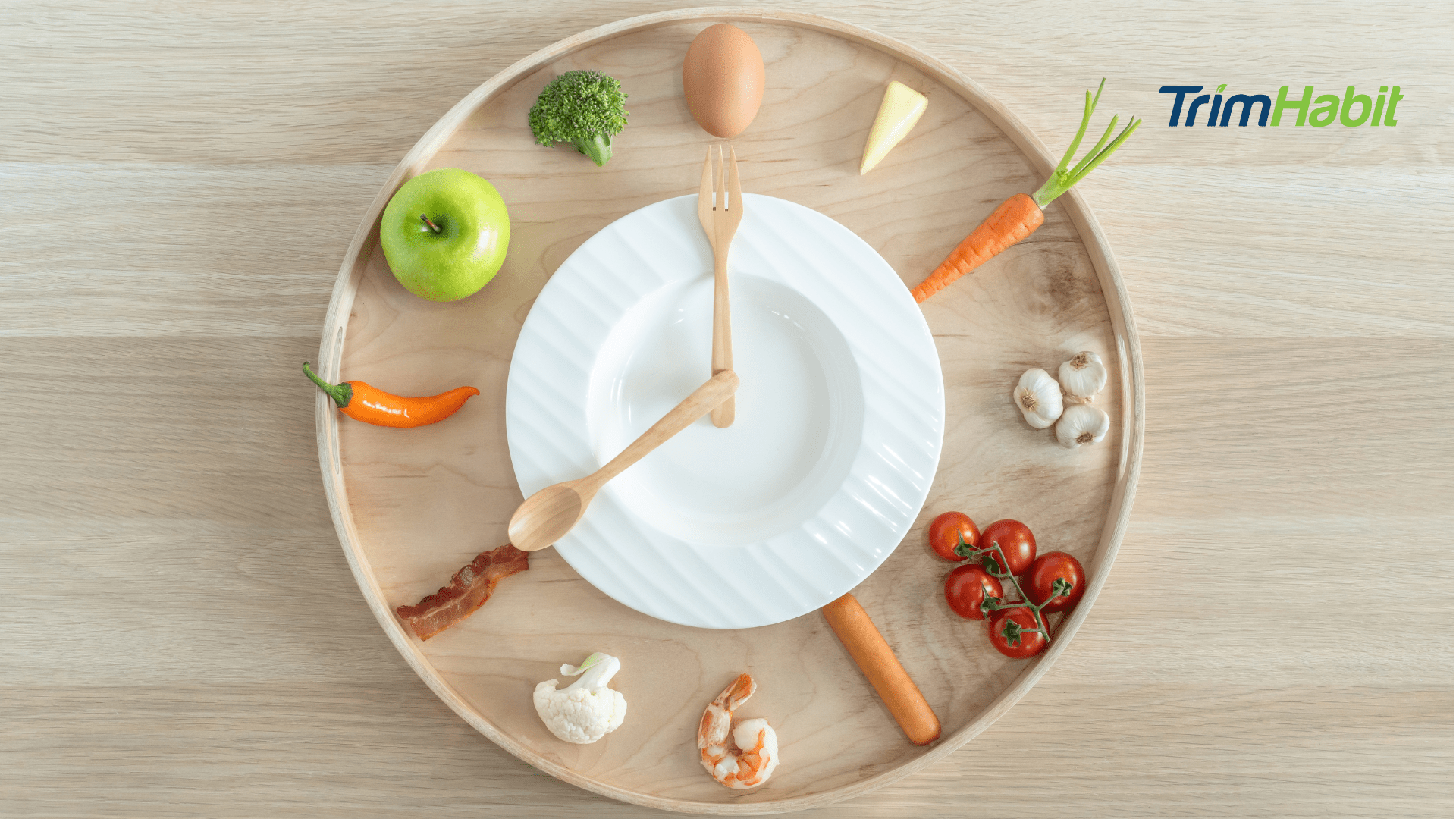When you are prescribed semaglutide, eating less is only part of the change. Your hunger cues shift, digestion slows, and your body processes food in a different way. You might skip meals without meaning to, or choose what feels like a light snack only to end up feeling uncomfortably full. This is why understanding both how and when to eat becomes just as important as choosing the right foods.
One of the most effective ways to support weight loss is to follow proven meal timing tips for people taking semaglutide. They can guide you in planning meals that work with your body’s changes, helping you feel satisfied without overeating and making it easier to choose foods that nourish you.
Why Timing Matters With Semaglutide
Semaglutide works by slowing gastric emptying and enhancing appetite suppression, which can lead to a lower calorie intake without much effort and help you lose weight1. But this also means food stays in your stomach longer. If you eat too fast, eat too late, or skip meals and binge later, you might experience nausea, bloating, or fatigue. Inconsistent meal timing can also throw off your blood sugar levels, even if you are eating healthy foods.
Proper timing helps you:
- Avoid blood sugar fluctuations
- Keep your blood sugar levels stable
- Reduce uncomfortable GI symptoms
- Support lean muscle mass
- Stay on track with your weight loss journey
- Maximize your protein intake for recovery and energy
Your First Meal: Break The Fast With Intention
You might not wake up feeling hungry. That’s common when taking semaglutide. But skipping breakfast can lead to low energy, poor concentration, and unstable blood sugar later in the day. Instead of forcing yourself to eat a full meal immediately, ease in.
Start with something light but balanced:
- A slice of whole grain toast with avocado and fresh herbs
- Plain yogurt topped with berries and a few almonds
- A boiled egg with a side of leafy greens drizzled with olive oil
These are all good options that combine healthy fats, fiber, and lean proteins without being too heavy. They also prevent mid-morning cravings and support metabolic health from the start.
Morning Timing: What Happens If You Wait Too Long?
You might feel proud of going until lunch without eating, but this pattern can work against your weight loss goals. Long fasting periods followed by large meals can cause blood sugar spikes, cravings for sugary snacks, or even dizziness.
Spacing meals every 4 to 5 hours keeps your blood sugar steady and makes it easier to make good choices when you do eat. Your goal is sustainable weight loss, not starvation. A healthy morning snack can bridge the gap if lunch is far away.
Good mid-morning options include:
- A small Greek yogurt
- A few vegetable sticks and hummus
- A hard-boiled egg and cucumber slices
- These help maintain steady energy levels without disrupting your progress.
Lunch: The Powerhouse Meal
This is the time to load up on nutrient-dense foods. Lunch should be your most balanced meal, especially if you’re active or exercising later in the day. Prioritize fruits and vegetables, whole grains, and lean proteins to stay satisfied without feeling stuffed.
Sample lunch ideas:
- Grilled chicken with brown rice, steamed green beans, and a side of chopped tomatoes
- A large salad with salmon, non-starchy vegetables, quinoa, and an olive oil vinaigrette
- A whole grain tortilla filled with black beans, avocado, and shredded romaine
This is also when hydration matters most. Instead of reaching for carbonated beverages or sugary drinks, sip water or herbal tea to help digestion and energy.
Mid-Afternoon: Watch For The Crash
If you’re used to an afternoon dip in energy, semaglutide may reduce that urge. But if you still notice fatigue or brain fog, a small snack with healthy fats or whole grains can help. Skipping this snack may leave you too hungry at dinner, leading to poor choices.
Try:
- Low-fat dairy like cottage cheese with apple slices
- A spoonful of nut butter on a rice cake
- Carrot sticks and plain yogurt dip with dill
Avoid processed foods and anything overly salty or sweet. These only give you short bursts of energy followed by a crash.
Dinner: Light But Satisfying
Eating too close to bedtime can lead to indigestion or nausea, especially with slower gastric emptying from semaglutide. Aim to eat dinner at least two to three hours before bed. Keep it lighter than lunch, but still filling enough to prevent late-night snacking.
Focus on:
- A grilled turkey patty with sautéed zucchini and a small sweet potato
- Baked fish with roasted starchy vegetables and a cucumber salad
- Tofu stir-fry with whole grains and steamed carrots
Avoid fried foods, spicy foods, and high-fat meals. These are harder to digest and can trigger discomfort at night. The goal is comfort, not restriction.
Evening Eating: Set Boundaries
Even if you’re not physically hungry, it’s easy to fall into mindless habits such as grabbing sugary snacks while watching TV or finishing dinner late out of convenience. Semaglutide helps reduce these urges, but it’s still important to build mindful eating habits around the clock.
Ask yourself:
- Am I hungry or just bored?
- Did I eat enough protein today?
- Will this help me reach my weight loss targets?
If you truly need something, keep it small and easy to digest:
- A small serving of low-fat dairy
- A few slices of turkey breast
- Half a banana with a spoon of plain yogurt
Late-night eating is often more about comfort than nutrition. Choose calm, supportive foods if you must eat before bed.
Weekend Timing
Your weekdays might be on point, but if weekends are full of skipped meals, late-night pizza, and snacks instead of meals, your progress can stall. You don’t need to be perfect, but consistency builds results.
Try to keep your eating times within 1 to 2 hours of your weekday schedule. That means breakfast still happens before 10 am, lunch around 1 or 2, and dinner no later than 8. Leave room for flexibility but avoid going from five meals a day to one.
Types Of Foods And the Best Time To Eat Them
Some foods are better timed earlier in the day, while others are better saved for later:
- High sugar foods: Best avoided or timed carefully around workouts
- Whole grains: Excellent at breakfast and lunch for long-lasting energy
- Lean proteins: Needed throughout the day to maintain muscle mass
- Fresh fruit: Best in the morning or before exercise
- Spicy foods: Can cause discomfort if eaten late
- Healthy fats: Ideal at lunch for sustained fullness
Timing these well helps with lowering blood sugar and reducing energy dips.
Common Mistakes To Avoid
Skipping meals entirely
While semaglutide reduces hunger, going all day without food often leads to blood sugar crashes and poor decision-making. Eat something nourishing every 4 to 6 hours.
Waiting to feel starving
By the time you feel hunger, your energy is likely already dipping. Preempt meals with a plan to keep blood sugar levels even.
Eating too fast
When you eat slowly, you give your body time to register fullness, reducing the chance of discomfort or nausea.
Choosing convenience over balance
Microwavable noodles or fried foods might be quick, but they don’t support your body during this transformation. Focus on balanced meals made with real ingredients.
Avoiding fat entirely
You need heart-healthy fats like avocado, nuts, seeds, and olive oil to absorb nutrients and feel full. Don’t fear fat, just choose the right kind.
Sample Eating Schedule
Here’s how a day might look when you’re taking semaglutide:
7:30 AM – Light breakfast
- One slice of wheat bread with avocado
- Half a banana
- Green tea
11:30 AM – Balanced lunch
- Grilled chicken
- Brown rice
- Roasted broccoli and bell peppers
- Water with lemon
3:30 PM – Smart snack
- Greek yogurt with blueberries
6:30 PM – Lighter dinner
- Baked salmon
- Steamed non-starchy vegetables
- Small baked sweet potato
8:30 PM – Optional snack (if hungry)
- Low-fat dairy or a boiled egg
This schedule supports your healthy diet, avoids late-night cravings, and keeps your metabolism working efficiently throughout the day.
Listen To Your Body As It Adjusts
At first, your hunger may be unpredictable. You might feel full after three bites one day and ravenous the next. That’s normal. As your body adjusts, your needs will shift.
Track how you feel after meals. Are you energized or sluggish? Satisfied or still looking for more? Use this feedback to fine-tune your eating times. What works for someone else might not work for you. After all, weight loss varies, and the secret to successful weight loss is tailoring habits to your body, not fighting it.
Long-Term Timing Equals Long-Term Results
There is no perfect meal timing that guarantees successful weight loss. But being consistent, aware, and responsive to your body’s needs is a huge part of your healthy lifestyle. With every smart decision, whether it’s eating breakfast earlier or avoiding late-night snacks, you’re building habits that lead to long-term success.
Meal timing isn’t about setting alarms. It’s about learning when your body thrives and honoring that rhythm daily.
Final Thoughts: Meal Timing Tips For People Taking Semaglutide
Your eating schedule does not have to follow a strict set of rules. It only needs to match your energy, your digestion, and the way your days usually go. Use these meal timing tips to help you feel stronger, think more clearly, and move closer to the version of yourself you want to be.
Food is more than something to fill your stomach. It is a way to care for yourself and give your body what it needs to function well. When you pay attention to when you eat, you naturally support a balanced diet that helps you manage your body weight in a way that feels steady and achievable. In giving your body the timing it needs, you are not just working toward weight loss. You are building lasting energy, better health, and a sense of control over your choices that can carry you far into the future.









